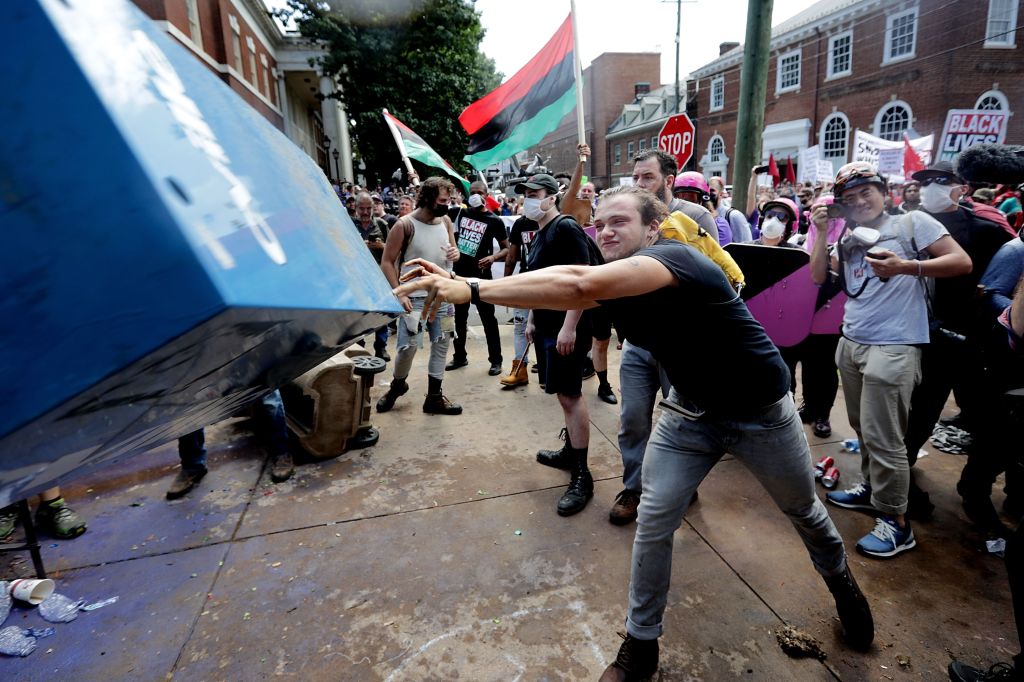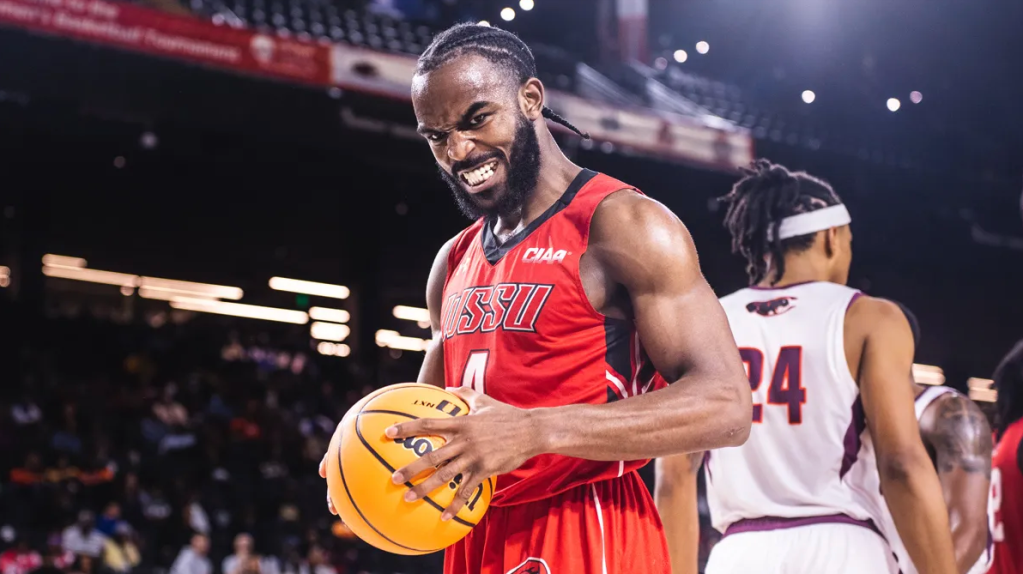
Source: Chip Somodevilla / Getty
Despite growing up in a rural Virginia town where Confederate symbols were daily reminders of our violent history, I had never been so terrorized as in the four years I spent in Charlottesville, Virginia. If in my hometown of Tappahannock, the murderous history of white supremacy bubbled beneath the surface, it usually required some breach of the delicate dance of contemporary segregation etiquette or some collision of bodies in space and time to get white folks to openly threaten violence or to enact it.
Within a month of my time in Charlottesville, however, I realized a spontaneous and riotous eruption of white violence was always ready to be on and popping. For the most part, racist violence in Charlottesville consisted of being met with base white caricatures of Black culture hurled out of fleeing vehicles or inscribed ritualistically on Black peoples’ personal property. Like the time in my second week when a group of friends and I were told to “eat watermelon bitches” as a white sedan sped by. Or the time Philip Jackson’s room was marked with a racial epithet on the Lawn. It was also often physical. I recall at least two times, over the course of my tenure there when white passengers flung glass bottles into groups of Black students who dared to engage in nightlife on the Corner.
By my third year, in the classroom or in some other public forum, I could easily have destroyed the premises of these silly insults and then some. Part of my training at the University of Virginia’s Carter G. Woodson Institute was to intellectually out-maneuver racism, white supremacy and white people. But the basic stupid shit white boys called out of the windows of cars as they sped off was done clandestinely during the night in order to terrorize: in order to invoke the bounty hunter, the klan, the lynch mob, and the white rapist. Echoing the history of the spectacle of Black pain and fear for white enjoyment, for riotous white fun, served also to remind all Black people that Charlottesville’s streets and the University’s grounds were eternally white property. It was deployed to remind us, despite any glimmer of comfort we held during the day, we were neither safe nor welcome.
The most recent eruption of violence in Charlottesville is no aberration. Charlottesville and the University are a kind of “miasmic space that can attract further acts of violence.” The fabric of the city and the University consistently recall and replay the history of white vitriol and mob violence that will continue unabated so long as white folks, including the liberals who are “shocked,” avoid reckoning with the violent totality of this whole god-damned country. I mean, Jefferson is still celebrated at UVA as if he never owned hundreds of people; as if his systematic rape of Sally Hemings didn’t fundamentally condition his conceptions of liberty and freedom!
I’m going to enjoy us, as white supremacists invite their own cosmic destruction.
And yet, in my time at UVA and in Charlottesville, I also knew of other possibilities. I also came to taste of the fruits of Black resilience, beauty, and power staged right there in that evil space. On the grounds, Black students flocked together and we built our own world in the shadow of Jefferson’s rigid statue. We had Black Eating Time (BET) in Newcomb Hall. I don’t know the history of BET but I know that one of the workers there. Ms. Kathy McGruder welcomed us and we capitalized on her hospitality as an opportunity to love on one another. We also had the Black Bus Stop—a place on the on central grounds where you could find Black people any time of day chatting, listening to music, stepping, romancing, flirting, laughing, living in our fullness.
And there were the Black student organizations. For me, especially, there was Black Voices, the University’s oldest Black organization and a gospel choir. In that space of Minor Hall where we practiced, we lifted spectacular harmonies that, when at full throttle, provided transcendent spaces of communion between Black people and god inviting us into an elsewhere that suspended the evil space if only for an hour every Thursday.
UVA professors Claudrena Harold and Kevin Everson recall this other history, that of Black UVA, in their series of six short films: Sugarcoated Arsenic, U. OF VIRGINIA, CHARLOTTESVILLE, VA 1976, We Demand, Fastest Man in the State, 70 kg, and How Can I Ever Be Late. Instead of watching the videos of tiki-torch yielding white supremacists reenacting the violence of their ancestors in the evil ground of Charlottesville and UVA, I’m going to re-watch the beautiful portrayals of Black folks living in their fullness; standing together and studying deeply; loving on each other. I’m going to replay old YouTube clips of Black Voices inviting a different world. I’m also going to swim so I can use the alternative acoustics of pool water to temporarily forget all the destructiveness that has been, is, and will be. I’m going to talk to my neighbors because Black elders and youths already know the cruelness of this social order and continue to create vitality in spite of it. I’m going to enjoy us, as white supremacists invite their own cosmic destruction.
J.T. Roane is Assistant Professor of Women’s, Gender and Sexuality Studies at the University of Cincinnati.
















